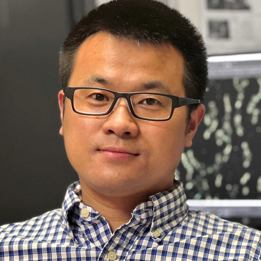Abstract: The human immune system comprises a network of specialized cells and biomolecules that work together to defend the body against attacks by foreign invaders, known as antigens. This intricate network of cells and biomolecules also creates a complex puzzle. While the immune system has the capacity for an almost unlimited range of antigens, how does it achieve exquisite specificity? What enables immune cells to communicate over long distances and orchestrate a bodywide immune response? This talk will highlight our use of single-molecule and superresolution fluorescence imaging techniques to uncover the molecular mechanisms and subcellular structures that enable these unique immune functions. The first part will describe our discovery of a temporal mechanism by which antibodies achieve binding specificity in a crowded cellular environment. Antibodies are known to bind to antigens in a classic lock- and-key fashion. Our results suggest an additional kinetic aspect employed by antibodies to discriminate binding partners. The dynamic behaviors enabled us to establish a quantitative superresolution molecular census technique. The second part will discuss our work on uncovering specialized membrane structures utilized by dendritic cells for antigen collection. Using fluorescent artificial antigens, we discovered a massive membrane fiber network extending up to ten times the size of the cell body. We revealed the nanoscale morphology and functional activity of the fiber network in the uptake and transport of antigens. The imaging capability enables us to evaluate next-generation vaccine designs that target this new mechanism. Together, ultrasensitive fluorescence imaging provides unique mechanistic insights toward an enhanced understanding of the immune machinery, one molecular piece at a time.
Speaker:
Institution:
Location:

